 |
 |
 |
 |
 |
 |
 |
 |
 |
 |
 |
Coping with Slums and Slabs
Volume, Amsterdam, issue 16, July 2008. |
 |
 |
 |
 |
 |
 |
 |
 |
 |
|
 |
 |
 |
 |
 |
 |
 |
 |
 |
 |
Letter from Paris
Mark, Amsterdam, issue 7, April / May 2007.
Dear Mark, Paris is my day-to-day metropolitan experience, a city of contrasts far removed from the formal image envisioned by many. Since I studied art history here in the '90s, I have been fascinated by this multicultural city. Maybe that is why I stayed: Paris allowed me to do my thing. This agglomeration of 11 million inhabitants is both shabby and chic, overly restored in some places and dilapidated in others. See more |
 |
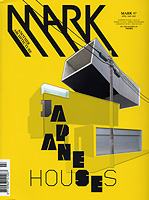 |
 |
 |
 |
 |
 |
 |
 |
|
 |
 |
 |
 |
 |
 |
 |
 |
 |
 |
The power to annihilate. State and architecture in France
Volume, Amsterdam, issue 20, January 2006.
A number of recent events, which entailed the government canceling architecture rather than stimulating it, demonstrate that a fundamental change has come about in the approach to present-day architecture in France. In order to understand how the 'Grands Travaux' (1981-1995) could result in a period of architectural sabotage, one should consider the exercise of power in the current political system, the Fifth Republic. This constitution, tailor-made for General de Gaulle in 1958, restricts the role of parliament, but strengthens the power of the president. As a polity, the Fifth Republic traces a kind of arc: its birth under de Gaulle, rise and flourishing under Georges Pompidou and Valéry Giscard d'Estaing, decline during Mitterrand's 'regal reign' and the collapse of the constitution under Jacques Chirac, an implosion of the political system. See more |
 |
 |
 |
 |
 |
 |
 |
 |
 |
 |
|
 |
 |
 |
 |
 |
 |
 |
 |
 |
 |
New New Gurna. The dynamics of intransigence
Archis, Amsterdam, issue 3, June 2004.
Has modern, well-meaning architecture ever foundered on more intransigence than near Luxor in Egypt? In his book Architecture for the Poor, the architect Hassan Fathy (1900-1989) described the dramatic demise of his utopian project New Gurna, which had been intended as a model village for the inhabitants of Gurna (or El Gournah). Hassan Fathy's mud-brick village was sabotaged through deliberate flooding by the stubborn inhabitants of Gurna, a village situated higher up, who were determined to continue living above the ancient Egyptian heritage and close to Western archaeologists and tourists. Recently, a third and, for the time being, final act was added to the story: following Gurna (nineteenth century) and New Gurna (1947), there is now... New New Gurna. This is not only about alleged tomb robberies or a misunderstood architect, it is also an architectural mirror for contemporary Egypt. See more |
 |
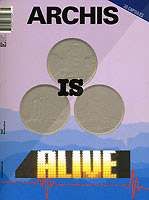 |
 |
 |
 |
 |
 |
 |
 |
|
 |
 |
 |
 |
 |
 |
 |
 |
 |
 |
Caught between repression and abolition. Recent French prison architecture
Archis, Amsterdam, issue 6, December 2003.
Architecture and prison make a curious combination. With this brief, architecture as a form of idealism hits a brick wall. And a number of recently realized prisons in France give a clear insight into the tension between the political interpretation of a social demand (security) and the responsibility towards the individual. Can architecture act as an intermediary? See more |
 |
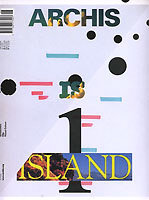 |
 |
 |
 |
 |
 |
 |
 |
|
 |
 |
 |
 |
 |
 |
 |
 |
 |
 |
Périphérique city. Parisian ring road on display
Archis, Amsterdam, issue 4, September 2003.
It is thirty years since the Périphérique, the last major piece of infrastructure designed for motor traffic in Paris, came into use. The 35 kilometre-long road handles 1.2 million cars a day, bridges the Seine twice, crosses nine railway lines, seventeen Métro lines and 66 roads, connects with five shopping centres, 13 multi-storey car parks and 22 petrol stations and is illuminated by 38,490 light bulbs. The 99 cameras and 324 warning signs are powerless to prevent the 3,000 accidents that take place on it every year. The visual experience it provides the motorist – acceleration, deceleration, the countryside divided up into series of scenes – inspired Paul Virilio to develop the concept of the cinematographic city. See more |
 |
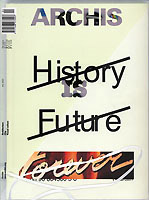 |
 |
 |
 |
 |
 |
 |
 |
|
 |
 |
 |
 |
 |
 |
 |
 |
 |
 |
Marseilles. Architectural representations of social diversity
Archis, Amsterdam, issue 2, April 2002.
Marseilles, long synonymous with urban anarchy, economic bankruptcy and social tension, is hard at work on its renaissance. Three very different urban development projects have turned France's oldest city into an intriguing architectural laboratory, a 'melting pot' of conflicting approaches to urban development. The metropolis aspires to occupy a pivotal economic and cultural position between Europe and the Mediterranean region. Can the city where Europe and Africa meet do this and still retain its own unique character? See more |
 |
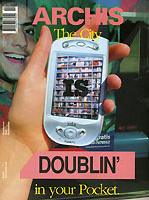 |
 |
 |
 |
 |
 |
 |
 |
 |
|
 |
 |
 |
 |
 |
 |
 |
 |
 |
 |
The beauty of transience. The Palais de Tokyo in Paris
Archis, Amsterdam, issue 1, February 2002. |
 |
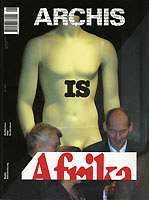 |
 |
 |
 |
 |
 |
 |
 |
|
 |
 |
 |
 |
 |
 |
 |
 |
 |
 |
A TGV in Provence. The French railways' architectural policy
Archis, Amsterdam, issue 6, December 2001.
The TGV-Méditerranée, a triangle of fast tracks between Valence, Marseilles and Nîmes, opened in June. How did the TGV transform the environment, what is the quality of the new engineering works and stations, and what does the TGV network mean for the French physical environment? See more |
 |
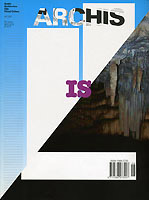 |
 |
 |
 |
 |
 |
 |
 |
|
 |
 |
 |
 |
 |
 |
 |
 |
 |
 |
The moon as an urban argument. Toyo Ito directs the Groningen Festival
Archis, Rotterdam, issue 5, September 2001. |
 |
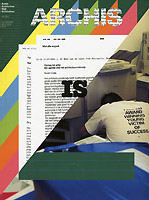 |
 |
 |
 |
 |
 |
 |
 |
|
 |
 |
 |
 |
 |
 |
 |
 |
 |
 |
Five concepts for the Cognacq-Jay hospital in Paris
Archis, Rotterdam, issue 6, June 2000.
The competition for the modernization of the Cognacq-Jay hospital was based on a complex programme. The generally unheeded tragic nature of everyday life in a hospital rarely has a decor other than standard architecture. The Cognacq-Jay hospital, whose aims include providing the best possible care for terminal patients, invited five architects - Architecture Studio, Chemetov + Huidobro, Dominique Perrault, Jean Nouvel and Toyo Ito - to design a hospital of enhanced quality. The winning scheme by Toyo Ito is being developed and construction is scheduled for 2003. See more |
 |
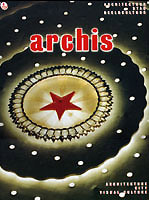 |
 |
 |
 |
 |
 |
 |
 |
|
 |
 |
 |
 |
 |
 |
 |
 |
 |
 |
Beaubourg. From utopia to monument
Archis, Rotterdam, issue 5, May 2000.
Since January the remodelled Centre Pompidou again lies like a multicoloured passenger ship in the leaden sea of Paris roofs. When it was completed in 1977, it was an expression of the democratizing of knowledge and culture. After twenty years of intensive use, the time was felt to be ripe to reformulate its function. Ideals wear out faster than buildings, but it's hard to 'doctor' masterpieces.
Is the renovation an adaptation to present-day requirements? Or does it express the disillusions of the '68 generation? A report on a 'renovation', or how utopia was recast as a monument. See more |
 |
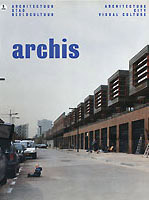 |
 |
 |
 |
 |
 |
 |
 |
|
 |
 |
 |
|
 |

